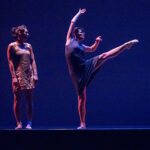Noel Streatfeild, renowned for her captivating children’s novels set in the world of performing arts, penned Dancing Shoes as another gem in her “Shoes” series, following Ballet Shoes and Theater Shoes. This story transports readers into the demanding atmosphere of a dance school run by the ego-centric Cora Wintle, who grandly refers to her students as “Wintle’s Wonders.” At the heart of the narrative are Rachel, Cora’s niece, and her adopted sister Hilary, who find themselves under Cora’s roof after the untimely death of their mother. While Rachel harbors no passion for dance, Hilary possesses a natural talent, echoing their mother’s aspirations for her to attend the prestigious Royal Ballet School. This sets the stage for Rachel’s underlying concern that Mrs. Wintle’s training may not be the rigorous preparation Hilary truly needs. Adding to their challenges, both sisters must navigate the blatant favoritism Cora displays towards her own spoiled daughter, Dulcie.
While Streatfeild’s writing style, enhanced by Elizabeth Sastre’s narration in the audiobook version, remains enjoyable, Dancing Shoes arguably stands as the weakest among the “Shoes” trilogy. The narrative structure bears a striking resemblance to its predecessors, Ballet Shoes and Theater Shoes, yet the characters lack the same depth and intrigue found in the Fossil sisters or the Forbes children. Cora Wintle’s portrayal as the antagonist borders on caricature, and Rachel’s motivations for hindering Hilary’s progress as a “Wonder” feel somewhat unconvincing. Supporting characters like Pursey, the nurse, and Mrs. Storm, the teacher, come across as pale imitations of the memorable Nana and the Doctors Jakes and Smith from earlier books. Furthermore, Dulcie’s character could have benefited from some redeeming qualities to balance her spoiled nature.
However, Dancing Shoes distinguishes itself by its surprisingly contemporary feel, despite being published in 1957—the same year that witnessed the release of enduring classics such as Beverly Cleary’s Henry and Ribsy and Dr. Seuss’s The Cat in the Hat. Beyond a few dated references, the story’s themes and dynamics resonate even today. Modern readers, particularly those familiar with middle grade fiction, will recognize the sibling rivalry between Rachel and Hilary, and the dynamics with Dulcie mirror the “mean girls” tropes prevalent in 21st-century tween literature. This contemporary relevance might make Dancing Shoes more appealing to some young readers compared to the more traditionally styled earlier “Shoes” books.
Regrettably, this marks the final Streatfeild novel available in audiobook format. Although Dancing Shoes may not reach the heights of the other books in the series, the prospect of no longer hearing Elizabeth Sastre’s exceptional voice, which has become synonymous with Streatfeild’s characters, is undoubtedly disappointing for avid listeners.

